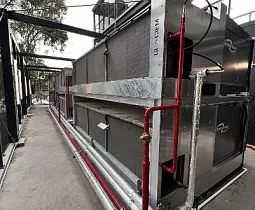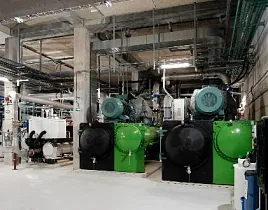Earlier this year, the Australian Institute of Refrigeration, Air Conditioning and Heating (AIRAH) ran an online survey to collect input on its position statement for HVAC&R licensing in Australia.
The position statement, developed by AIRAH’s Refrigeration Special Technical Group, defines the Institute’s stance on HVAC&R licensing in Australia, and will serve as an advocacy tool for working with government.
“AIRAH sees HVAC&R licensing as a key issue for helping to create an Australian HVAC&R industry that is highly skilled and professional, safe, sustainable and environmentally effective,” says AIRAH CEO Tony Gleeson, M.AIRAH. “By defining our position on this topic, we can guarantee a consistent approach and better advocate with stakeholders and government for change.”
More than 900 people completed the survey. About 75 per cent were HVAC&R technicians, 10 per cent were engineers, and the rest were made up mostly of apprentices, educators, representatives from government and industry groups, manufacturers and wholesalers. The survey presented the three key pillars of AIRAH’s position statement, and asked respondents to agree or disagree. There was strong support for all three points.
1. A nationally harmonised approach to licensing that covers all refrigerants; is based on minimum standards of competency and sector of operation; and is supported by ongoing compliance, education, monitoring and enforcement activities 94.21 per cent of respondents agreed.
2. A relevant Certificate III qualification (or equivalent) as the minimum qualification for professionals installing, commissioning, maintaining and decommissioning stationary HVAC&R systems 95.39 per cent of respondents agreed.
3. Pathways to bridge the skills gap including processes for assessing relevant industry experience and officially recognising this in the form of AQF qualifications; continuing professional development and a system for monitoring ongoing training; and transition periods to the new system to avoid skills shortages. 92.38 per cent of respondents agreed.
On top of the overall numbers, respondents provided about 750 detailed comments.
Some of the main concerns that emerged were:
• The restricted licensing system for Certificate II holders and the divisions in licensing between HVAC&R, plumbing and electrical work
• The safety risks around untrained technicians using new-generation refrigerants that are often flammable, toxic or work at high pressure
• The need for greater recognition and public awareness of HVAC&R as its own trade
• The importance of pathways for long-time technicians to have their experience recognised
• The potential cost of different licences required by HVAC&R technicians.
AIRAH will be working through these comments over the coming months to refine its position statement and identify areas for further research.
“We acknowledge that this is a complex issue – HVAC&R licensing has been debated in Australia for decades,” says Gleeson. “But it’s also a critical issue for our industry, which is
why we are doing this work. “Apart from indicating strong support for AIRAH’s position, the survey has provided a wealth of more specific observations that will inform our ongoing efforts. “We are thrilled with the positive response to the survey, and we thank everyone who participated and helped spread the word. The information provided will be invaluable for shaping AIRAH’s position and helping the whole industry move this vital matter forward.”
The full position statement and results of the survey are available at
www.airah.org.au/licensing




